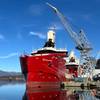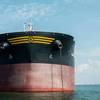Bureau Veritas Expands Remote Inspection Capabilities
Classification society Bureau Veritas (BV) said it can now provide owners and operators with new ways to survey their ships through Remote Inspection Techniques operated by BV’s own surveyors in France. The company said it aims to leverage digital technologies to deliver its inspection services more safely and efficiently.
BV’s key objective with the use of RIT is to limit the use of costly and dangerous means of access, by replacing them with safer and more efficient technologies during the structural inspection of the hull. RIT also provides value to ship owners and operators, supporting the optimization of the survey time, facilitating the preparation and planning of dry-docking repairs and saving costs.
This announcement follows two years of work to assess the potential, usage and value of Remote Inspection Techniques, which BV validated through a series of tests, Proof of Concepts (POC) and pilot surveys with aerial and underwater drones, crawlers, and remotely operated vehicles (ROV) on different types of vessels. In applicable cases, especially the close-up inspection of large cargo and ballast spaces at renewal or intermediate surveys, BV conducted surveys with drones operated by RIT service suppliers certified by BV and contracted by ship owners. BV has already approved 41 RIT Operators.
To further improve its operating mode with expanded capabilities and greater safety, BV went a step further, investing in aerial drones and the training of BV surveyors to be able to propose the use of drones operated by its own BV surveyors. The first surveys with aerial drones operated by BV surveyors took place early 2022, on a cable laying ship and a container ship, at renewal and intermediate surveys.
Bruno Dabouis, VP South Europe, North Africa & North America at Bureau Veritas Marine & Offshore, said, “Digitalization and Remote Inspection Techniques are boosting shipping’s entire business operations. The advantage of using aerial drones in applicable cases has been fully confirmed, and technologies are developing fast. This investment in new technologies and training is an important milestone. Shipping is evolving, class is evolving. This is a significant step in safety, time and costs of running inspection surveys.”














